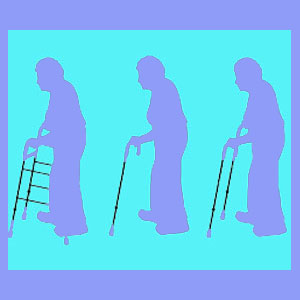
Sciatica weak legs is a symptomatic expression which usually occurs in the major muscular structures of the buttocks and thighs, but can also strike in the calves in less common circumstances. Weakness in the legs is one of the most common eventual consequences of chronic back and leg pain.
Weak legs can be attributed to many spinal and non-spinal structural issues, but can also result from circulatory concerns, disease processes or regional ischemia. It is crucial to research your diagnosed condition in order to prevent yourself from becoming a victim of the very prevalent misdiagnosis which occurs in the back pain industry.
This discussion will delve into leg weakness as part of a greater sciatic nerve pain expression. We will also talk about the different types of weakness and how each variety may help to diagnose the actual source of the symptom.
What is Sciatica Leg Weakness?
Leg weakness comes in 2 distinctive forms. Here are some facts detailing the 2 varieties of weak legs which may be associated with a sciatic nerve pain syndrome:
Objective weakness means that the legs are actually diminished in their overall strength. This weakness can be demonstrated and verified by diagnostic testing, as well as observed during physical exam. Objective weakness is usually the last symptom to become apparent, typically after a progression of pain, tingling and numbness.
Subjective weakness is more common then objective. This is when the legs feel very weak, but demonstrate little or no reduction in actual strength or functional ability. Subjective weakness stands a better chance of being caused by a nonstructural causation than objective forms.
Facts about Sciatica Weak Legs
Structural spinal issues diagnosed as causing leg weakness include herniated discs, abnormal spinal curvatures, spondylolisthesis, spinal osteoarthritic conditions and various other irregularities. However, in order for any of these conditions to actually cause any of the typical sciatica symptoms, it would have to definitively influence a nerve structure. This means that the spinal issue would have to compress or chemically irritate a nerve root or the spinal cord.
Non-spinal structural causes of weak legs may include sacroiliac joint pain syndromes and piriformis syndrome.
Non-sciatica related sources of weakness in the legs may include diabetes, peripheral neuropathy and various circulatory and neurological conditions.
Of course, I must mention that in my experience, oxygen deprivation is one of the most prevalent actual reasons for sciatica weakness, tingling, numbness and pain to exist, but is the least likely to be accurately diagnosed.
Sciatica Weak Legs Guidance
Structural spinal issues are typically expected to produce objective weakness, since actual nerve compression is supposedly occurring. It is rare for a compression syndrome, such as a pinched nerve, to enact subjective weakness.
Regional ischemia and disease processes, like CFS or FMS, usually produce subjective weakness and numbness, but objective cases can also occur, particularly when symptoms are severe and long lasting.
Remember that structural pinched nerve concerns should produce definite symptomatic expressions and it is crucial to compare these patterns to the actual symptoms experienced. This is one of the best ways of making sure that your pain and weakness have not been incorrectly attributed to some innocent and coincidental sciatica scapegoat.





